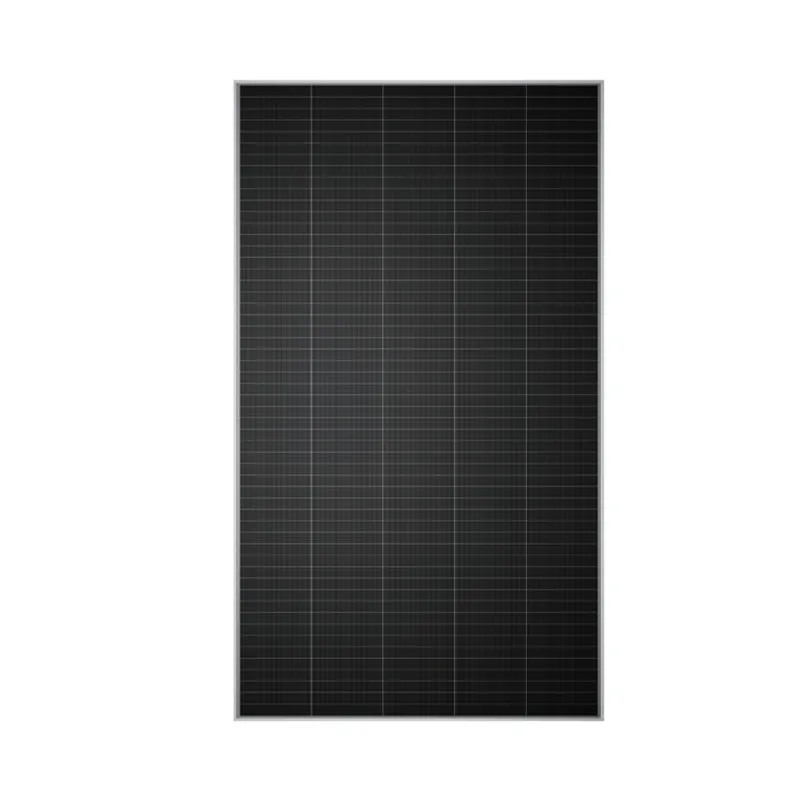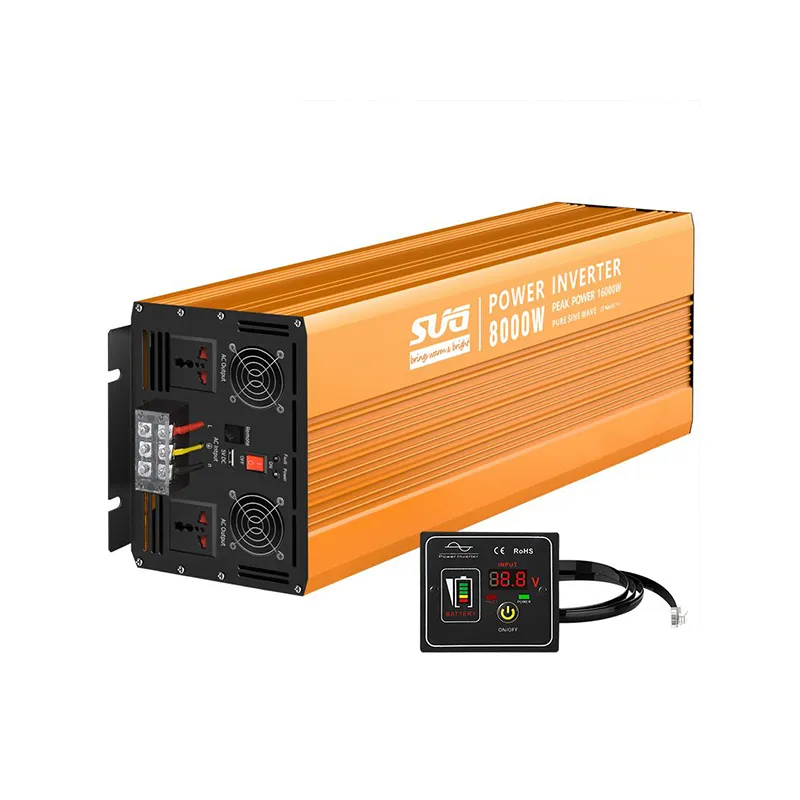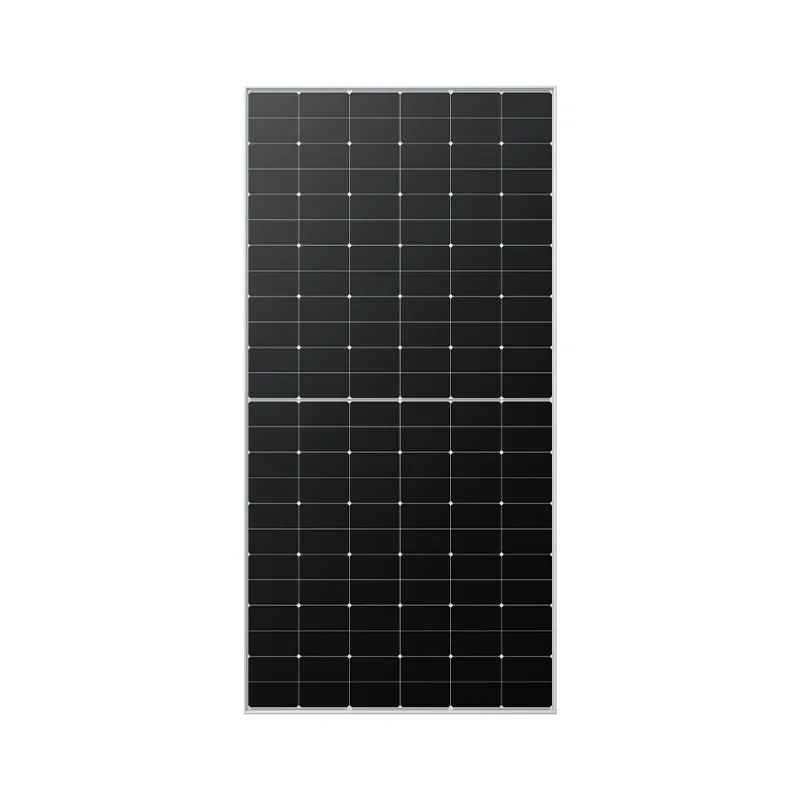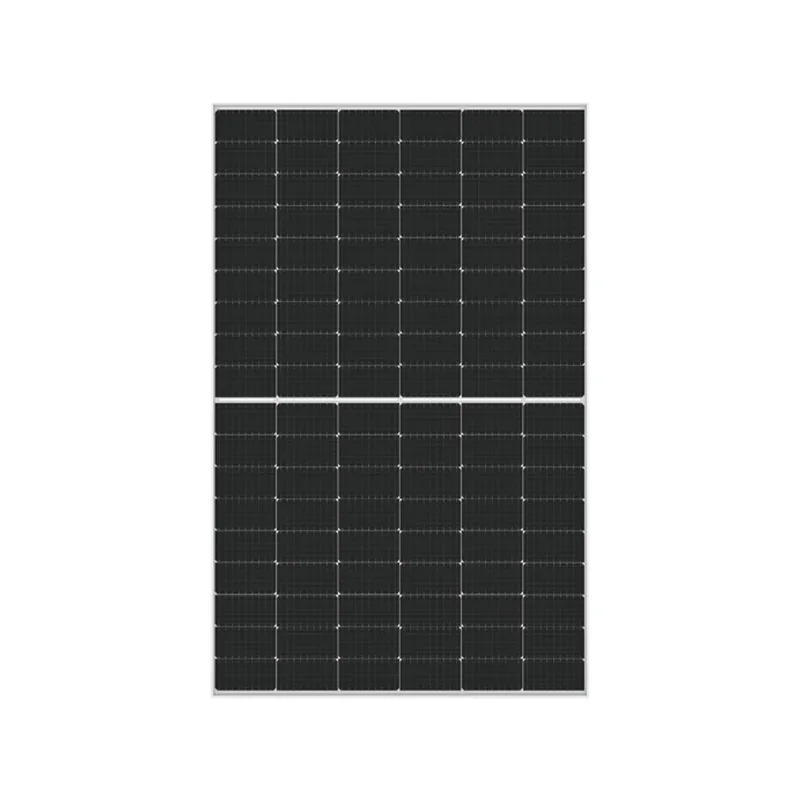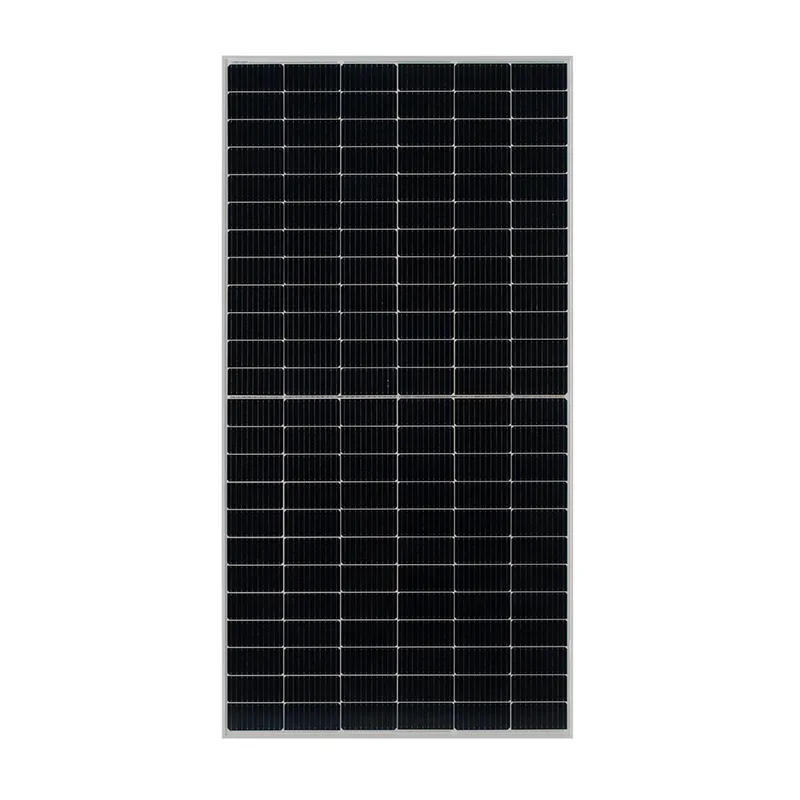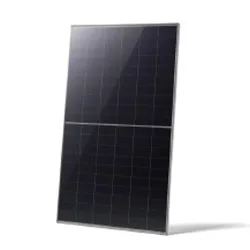Smart Tie Grid Inverter: Maximize On-Grid Solar Efficiency
Introduction to Grid-Tie Inverter Technology
In the rapidly evolving landscape of renewable energy, the tie grid inverter stands as a cornerstone technology, facilitating the seamless integration of distributed generation systems, particularly solar photovoltaics (PV), into the national electricity grid. This sophisticated electronic device converts the direct current (DC) generated by solar panels into alternating current (AC) that is synchronized with the utility grid's voltage and frequency. Its primary function is to enable excess solar energy to be fed back into the grid, offering significant economic and environmental benefits. As industries globally strive for decarbonization and energy independence, the efficiency, reliability, and intelligence of grid-tie inverters are paramount.
This article delves into the intricate world of grid-tie inverters, exploring their industrial significance, technical advancements, and strategic applications. We will cover key industry trends, delve into the technical specifications that define their performance, examine diverse application scenarios, and highlight the distinct technical advantages offered by modern solutions. Furthermore, we will provide a comparative analysis of leading vendors, discuss the potential for customized solutions, and present compelling real-world application case studies, all while upholding the highest standards of expertise, authoritativeness, and trustworthiness.
Industry Trends in Solar Inverters
The solar inverter market is characterized by dynamic innovation, driven by advancements in power electronics, digital control, and grid management. Key trends include:
- Higher Power Densities and Efficiency: Manufacturers are continuously pushing the boundaries of efficiency, with modern inverters often exceeding 98.5% European efficiency. This translates to more energy harvested and reduced system losses. Miniaturization through advanced thermal management and component integration leads to smaller, lighter units with higher power-to-volume ratios.
- Enhanced Grid Support Functions: Modern grid-tie inverters are no longer just energy converters; they are active grid participants. Features like Volt/VAR control, low voltage ride-through (LVRT), frequency regulation, and reactive power compensation are becoming standard. These "smart inverter" functionalities are crucial for grid stability, especially with increasing penetration of intermittent renewable energy sources.
- Modularity and Scalability: The rise of micro tie grid inverter technology for residential and commercial applications allows for module-level power optimization and greater system resilience. For larger utility-scale projects, modular string inverters offer increased flexibility in design and maintenance compared to centralized inverters.
- Integration with Energy Storage: Hybrid inverters that seamlessly integrate battery storage are gaining traction, providing demand-side management, peak shaving, and enhanced energy independence. This trend addresses the intermittency challenge of solar power and increases overall system reliability.
- Advanced Monitoring and Predictive Maintenance: Cloud-based monitoring platforms, often leveraging AI and machine learning, provide real-time performance data, fault diagnostics, and predictive maintenance capabilities. This reduces operational costs and maximizes uptime.
- Cybersecurity: As inverters become more connected, cybersecurity measures are increasingly important to protect against unauthorized access and potential grid vulnerabilities.
These trends collectively contribute to a more robust, efficient, and intelligent renewable energy infrastructure, enabling deeper integration of solar power into diverse applications.
Technical Specifications and Parameters of Tie Grid Inverter
Understanding the core technical specifications is crucial for selecting the optimal tie grid inverter for any given application. These parameters directly influence system performance, reliability, and cost-effectiveness. Let's consider a high-yield industrial inverter, such as the Growatt 185KW, to illustrate these critical specifications.
Growatt 185KW Safe High Efficiency High Yield Solar Inverter - Key Parameters
These specifications underscore the advanced engineering required for modern grid-tie inverters, ensuring both high yield and robust operation under varied environmental and grid conditions.
Manufacturing Process of Tie Grid Inverter
The manufacturing of a high-quality tie grid inverter is a meticulous process demanding precision engineering, advanced material science, and rigorous quality control. It encompasses several stages, from component sourcing to final assembly and testing, ensuring the device meets stringent industry standards and offers a long, reliable service life.
Process Flow Overview:
- Material Procurement and Component Manufacturing:
High-grade electronic components (IGBTs, capacitors, microcontrollers, DSPs) are sourced from reputable suppliers. Enclosure materials, typically high-strength aluminum alloys (e.g., Al-Si-Mg alloys for corrosion resistance) or galvanized steel, undergo initial processing like casting (for complex heat sink designs), forging (for high-strength structural parts), or sheet metal fabrication (CNC punching, bending). Specific components may undergo specialized processes; for instance, magnetic cores for transformers are precision-wound from high-permeability alloys.
- Printed Circuit Board (PCB) Assembly:
PCBs are fabricated with multiple layers to optimize signal integrity and power distribution. Automated Surface Mount Technology (SMT) lines populate the boards with thousands of microscopic components. This is followed by wave soldering or reflow soldering for through-hole components. Optical inspection (AOI) and in-circuit testing (ICT) ensure proper component placement and connectivity.
- Power Module Integration:
The power stage, comprising high-power IGBTs, MOSFETs, and DC-link capacitors, is assembled. These modules are often mounted onto precisely CNC-machined aluminum heat sinks to ensure efficient thermal dissipation, a critical factor for inverter longevity and performance. Thermal interface materials are applied with robotic precision.
- Enclosure Fabrication and Coating:
The inverter enclosure, designed for robust outdoor deployment (e.g., IP66 rated), undergoes advanced manufacturing. This includes CNC machining for precise openings and mounting points, welding, and often a multi-stage coating process. Powder coating, for instance, provides excellent corrosion resistance, UV protection, and aesthetics, vital for environments in petrochemical, metallurgy, or water supply & drainage industries where resilience against harsh chemicals and moisture is essential.
- Final Assembly:
All sub-assemblies (PCBs, power modules, control units, display interfaces) are integrated into the enclosure. Wiring harnesses are connected, ensuring correct electrical pathways and secure terminations. This stage often involves sophisticated robotic assembly for consistency and speed.
- Rigorous Testing and Quality Assurance:
Each inverter undergoes comprehensive testing:
- Functional Testing: Verification of all operational modes, MPPT tracking, and grid synchronization.
- Performance Testing: Measurement of efficiency (peak and Euro), power quality (THD), and reactive power capability across the full operating range.
- Safety Testing: Dielectric strength (hi-pot), insulation resistance, grounding continuity, and protection circuit verification (e.g., arc-fault detection, over/under voltage/frequency protection). Adherence to standards like IEC 62109-1/2.
- Environmental Testing: Burn-in tests, thermal cycling, humidity tests, and vibration tests to simulate extreme operating conditions and accelerate potential failures.
- Grid Code Compliance Testing: Verification against specific national and international grid codes (e.g., IEEE 1547, VDE-AR-N 4105) for grid connection and support functions.
Compliance with ISO 9001 for quality management and ISO 14001 for environmental management is standard practice. Product safety is often certified to standards such as UL, TUV, and CE, aligning with ANSI and other international norms.
- Packaging and Shipping:
Inverters are carefully packaged to prevent damage during transit, often using custom-designed crates or pallets with shock-absorbing materials.
The typical service life for a well-engineered and manufactured tie grid inverter is 15-25 years, contingent on proper installation, environmental conditions, and routine maintenance. The rigorous manufacturing process ensures the devices meet exacting requirements for energy saving in power plants and demonstrate robust corrosion resistance in industrial settings, ultimately delivering reliable performance across their operational lifespan.
Application Scenarios and Technical Advantages
The versatility of the on grid solar inverter allows its deployment across a wide spectrum of applications, each benefiting from its inherent technical advantages.
Typical Application Scenarios:
- Utility-Scale Solar Farms: Large centralized or distributed string inverters (100kW+ range) manage immense power flows, providing stable grid injection and advanced grid support services like reactive power compensation and frequency regulation.
- Commercial & Industrial (C&I) Rooftops: Medium-sized inverters (20kW-100kW) are ideal for businesses seeking to reduce electricity costs and enhance sustainability. Industries such as petrochemicals, metallurgy, and water treatment often leverage these systems to power their operations, benefiting from significant energy savings.
- Residential Solar Systems: String inverters or micro tie grid inverter units are used for homes, enabling homeowners to generate their own electricity and often sell excess back to the grid through net metering.
- Integrated Energy Solutions: Hybrid grid-tie inverters are integrated with battery energy storage systems (BESS) for enhanced resilience, peak demand shaving, and off-grid capabilities during outages, crucial for critical infrastructure.
- Community Solar Projects: Aggregating smaller systems to serve local communities, these projects often rely on reliable on-grid inverters to feed into the local distribution network.
Technical Advantages:
- High Energy Conversion Efficiency: Modern inverters achieve up to 99% peak efficiency, minimizing energy losses during DC-to-AC conversion, which directly translates to higher energy yield and improved return on investment.
- Maximum Power Point Tracking (MPPT): Advanced MPPT algorithms continuously adjust the operating point of the PV array to extract the maximum possible power under varying irradiance and temperature conditions, boosting overall system performance.
- Robust Grid Interaction: Compliance with international grid codes (e.g., IEEE 1547, VDE-AR-N 4105) ensures seamless and safe grid connection. Features like reactive power control, frequency support, and low voltage ride-through contribute to grid stability and reliability.
- Enhanced Safety Features: Integrated protections against over/under voltage, over current, islanding, ground faults, and arc faults (AFCI) ensure both personnel safety and equipment longevity.
- Remote Monitoring and Diagnostics: Built-in communication protocols (RS485, Ethernet, Wi-Fi) enable real-time performance monitoring, fault detection, and remote troubleshooting, reducing O&M costs and maximizing uptime.
- Scalability and Flexibility: From micro tie grid inverter units for individual panels to multi-MPPT string inverters and large central inverters, the technology offers scalable solutions for projects of any size and complexity.
- Environmental Durability: Inverters designed for industrial use often feature IP65/IP66 enclosures, protecting against dust and water ingress, along with robust thermal management systems, ensuring reliable operation in harsh environmental conditions (e.g., coastal areas for corrosion resistance, deserts for high temperatures).
These technical advantages make grid-tie inverters indispensable for modern solar energy systems, driving efficiency and sustainability across various industries.
Vendor Comparison: Leading Tie Grid Inverter ソリューション
The market for tie grid inverter solutions is highly competitive, with numerous vendors offering a range of products catering to different market segments. While specifics vary, a comparison often highlights key differentiators in technology, reliability, and support. Below is a conceptual comparison focusing on general characteristics of leading inverter types and their associated benefits/trade-offs, rather than specific vendor names, to illustrate critical factors for B2B decision-makers.
Inverter Technology Comparison
Choosing the right inverter type depends heavily on the project scale, site specifics (e.g., shading), budget, and desired level of monitoring and redundancy. Leading manufacturers, often with decades of experience and certifications like ISO, CE, UL, and partnerships with major energy providers, distinguish themselves through product innovation, global service networks, and robust warranty programs. For example, a company specializing in high-yield inverters like the Growatt 185KW demonstrates authority through its focus on specific high-power solutions for large-scale commercial and industrial applications, backing it with extensive testing and certifications for global deployment.
Customized Solutions for Grid-Tie Inverters
While standard grid-tie inverters offer broad applicability, many industrial and utility-scale projects necessitate tailored solutions to meet unique operational demands, environmental challenges, or specific grid code requirements. Customization often involves more than just selecting a product from a catalog; it's a collaborative process between the client and the manufacturer's engineering team.
Key areas for customized tie grid inverter solutions include:
- Specific Grid Code Compliance: Different regions and utilities have unique grid interconnection requirements (e.g., reactive power curves, fault ride-through capabilities, communication protocols). Manufacturers can configure firmware and hardware to meet these precise specifications, ensuring smooth integration and compliance.
- Environmental Hardening: For deployments in extreme conditions – such as coastal areas with high salinity, deserts with intense heat and dust, or industrial zones with corrosive atmospheres (e.g., petrochemical plants) – inverters can be customized with specialized coatings, enhanced sealing (e.g., NEMA 4X enclosures), or advanced cooling systems. This ensures optimal performance and extended service life.
- Integrated Monitoring & Control Systems: Beyond standard communication, custom solutions might involve integrating the inverter into existing SCADA (Supervisory Control and Data Acquisition) systems, implementing specific Modbus or IEC 61850 protocols, or developing bespoke dashboard interfaces for complex energy management strategies.
- Optimized Power Output & Voltage Ranges: While standard inverters cover common voltage ranges, specialized industrial machinery or unique grid infrastructures might require fine-tuned output voltage or frequency settings that are not typical off-the-shelf options.
- Hybrid System Integration: For complex energy systems combining solar PV with battery storage, diesel generators, or other distributed energy resources, custom inverter solutions ensure seamless orchestration and optimal energy flow management, often involving advanced power management algorithms.
- Physical Form Factor & Footprint: In projects with limited space or specific aesthetic requirements, manufacturers can work on optimizing the physical dimensions or mounting options of the inverter units.
For instance, in a water supply & drainage facility requiring continuous operation, a customized inverter solution might prioritize enhanced corrosion resistance for its enclosure, integrate seamlessly with the plant's existing power management system via a specific communication protocol, and offer robust protection against voltage fluctuations to safeguard sensitive pumping equipment. Customer feedback consistently highlights the value of these tailored approaches in achieving optimal performance and long-term reliability for challenging industrial applications.
Real-World Application Case Study: Industrial Solar Integration
Project Overview: A large manufacturing facility specializing in heavy machinery sought to reduce its operational carbon footprint and mitigate rising electricity costs by installing a substantial rooftop solar PV system. The facility's energy demand was considerable, with large machinery operating continuously, requiring a robust and highly efficient inverter solution capable of handling significant power fluctuations and integrating seamlessly with their existing industrial grid infrastructure.
Challenge: The primary challenges included the sheer scale of the 5MW PV array, the need for exceptionally high conversion efficiency to maximize return on investment, and stringent requirements for grid stability functions to prevent disruption to sensitive manufacturing processes. Furthermore, the industrial environment, characterized by moderate dust levels and fluctuating ambient temperatures, necessitated durable and reliable equipment.
Solution: The facility deployed a distributed system using multiple Growatt 185KW Safe High Efficiency High Yield Solar Inverters. The selection was based on the inverters' industry-leading 99.0% peak efficiency and 98.5% European efficiency, their robust IP66 protection rating, and their advanced MPPT capabilities (12 MPPTs per unit) to optimize energy harvest across varying rooftop conditions and potential shading from roof-mounted equipment. The inverters' advanced grid support functions, including reactive power compensation and low voltage ride-through, were critical in meeting the utility's interconnection requirements and maintaining grid stability for the plant's operations.
Implementation and Results: The installation involved meticulous planning and execution, integrating the inverters with the plant's internal switchgear and ensuring compliance with local electrical codes. Post-commissioning data revealed:
- Energy Savings: The solar system contributed over 6.5 GWh of clean electricity annually, leading to a reduction in grid electricity purchases by approximately 45% and significant cost savings.
- Carbon Footprint Reduction: An estimated 4,500 tons of CO2 emissions were offset annually, aligning with the company's sustainability goals.
- Operational Stability: The inverters' active grid management features ensured seamless operation, with no reported disruptions to manufacturing processes due to solar integration. Remote monitoring allowed the plant's energy management team to track performance in real-time and address any anomalies proactively.
- Reliability: After two years of operation, the system demonstrated high reliability, with minimal downtime attributed to inverter performance. This positive customer feedback underscored the robust engineering and manufacturing quality.
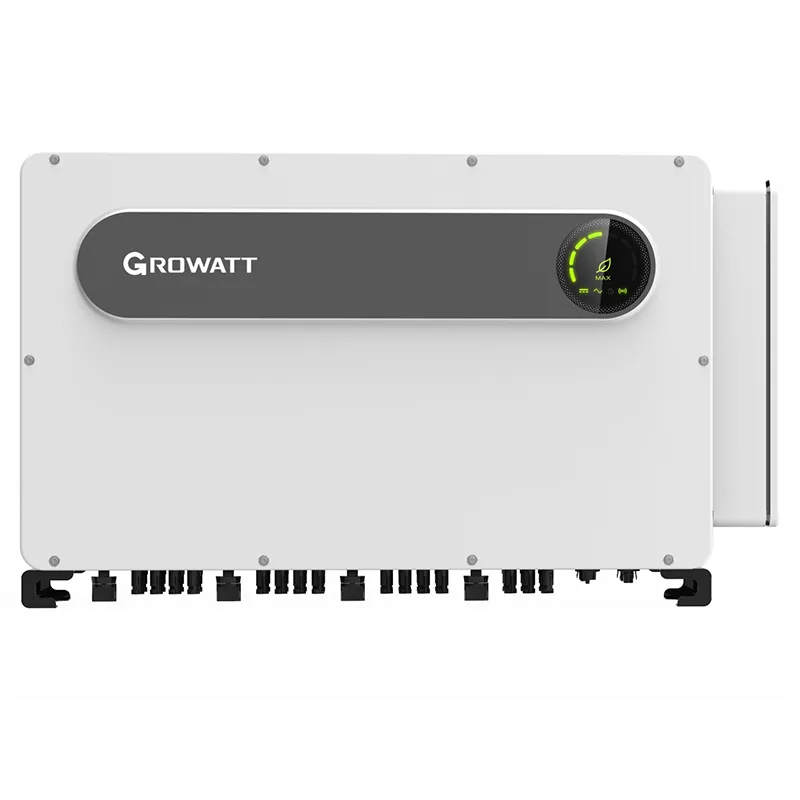
Image: A typical industrial installation of a tie grid inverter, showcasing its robust design for high-yield solar energy conversion.
This case study exemplifies how high-performance grid-tie inverters are crucial enablers for large-scale industrial decarbonization and energy efficiency initiatives, delivering tangible economic and environmental benefits.
Ensuring Trustworthiness: FAQ, Lead Time, Warranty, and Support
Frequently Asked Questions (FAQ)
- Q1: What is the primary function of a tie grid inverter?
- A1: Its primary function is to convert direct current (DC) electricity generated by solar panels into alternating current (AC) electricity, which is then fed into the utility grid. It also synchronizes with the grid's voltage and frequency and provides essential grid support functions.
- Q2: How important is efficiency in a grid-tie inverter?
- A2: Extremely important. Higher efficiency (e.g., 98.5%+ European efficiency) means less energy is lost during conversion, resulting in more electricity fed into the grid and a quicker return on investment for the system owner. It directly impacts the overall yield of the solar plant.
- Q3: What are grid support functions?
- A3: These are advanced capabilities that allow the inverter to actively contribute to grid stability. Examples include reactive power control (Volt/VAR), low voltage ride-through (LVRT), and frequency regulation, which help maintain grid voltage and frequency within acceptable limits, especially with high renewable energy penetration.
- Q4: How does a micro tie grid inverter differ from a string inverter?
- A4: A micro inverter converts DC to AC at the individual solar panel level, offering panel-level MPPT and greater resilience to shading. A string inverter handles the output of multiple panels (a "string") and typically has one or more MPPTs for groups of panels. Micro inverters are ideal for complex, shaded rooftops, while string inverters are common for larger, less obstructed arrays.
Lead Time and Fulfillment
For standard industrial grid-tie inverter models, typical lead times range from 4 to 8 weeks, depending on order volume and current manufacturing schedules. For customized solutions, lead times may extend to 10-16 weeks to accommodate specific design, testing, and certification processes. We maintain strategic inventory levels for high-demand models to support faster deployment for urgent projects. Our logistics network ensures efficient and reliable global shipping, with full tracking and customs support.
Warranty Commitments
Our industrial-grade inverters, such as the Growatt 185KW, typically come with a standard 5-year product warranty, covering defects in materials and workmanship. This warranty can often be extended up to 10 or 15 years through optional service packages, providing long-term peace of mind. Our warranty terms are transparent, outlining coverage, conditions, and claims procedures, ensuring comprehensive protection for your investment.
Customer Support and After-Sales Service
We are committed to providing unparalleled customer support throughout the product lifecycle. Our dedicated technical support team, composed of experienced engineers, offers assistance with installation, commissioning, troubleshooting, and ongoing system optimization. Support channels include telephone, email, and a comprehensive online portal with technical documentation and FAQs. We also offer on-site support for critical issues and training programs for maintenance personnel, ensuring our clients can maximize the performance and longevity of their inverter systems. Our global service network ensures prompt response times and efficient resolution of any technical challenges.
Conclusion
の tie grid inverter is more than just a component; it is the intelligent heart of any grid-connected solar PV system, enabling efficient, reliable, and safe integration of renewable energy into our existing infrastructure. From micro-scale residential applications to multi-megawatt utility farms, these devices are continuously evolving, driven by the imperative for higher efficiency, enhanced grid stability, and advanced digital control. As the global energy transition accelerates, the demand for sophisticated, robust, and dependable inverter technology will only intensify. Partnering with manufacturers who demonstrate deep expertise, proven experience, authoritative certifications, and unwavering trustworthiness is crucial for successful project deployment and long-term operational excellence in the B2B renewable energy sector.
References
- Renewable Energy Policy Network for the 21st Century (REN21). Renewables 2023 Global Status Report.
- International Electrotechnical Commission (IEC). IEC 62109-1/2: Safety of power converters for use in photovoltaic power systems.
- Institute of Electrical and Electronics Engineers (IEEE). IEEE 1547-2018: Standard for Interconnection and Interoperability of Distributed Energy Resources with Associated Electric Power Systems Interfaces.
- Fraunhofer Institute for Solar Energy Systems ISE. Photovoltaics Report.
- U.S. Department of Energy. Solar Energy Technologies Office.
-
Leading Monocrystalline Solar Panel Manufacturer - High Efficiency & QualityニュースAug.29,2025
-
TRINA 5E 420-445W Shingled Monofacial Solar Panel | High-EfficiencyニュースAug.28,2025
-
Solar Panel Cut Energy CostsニュースAug.18,2025
-
Panel Solar Bifacial Boosts Energy YieldsニュースAug.18,2025
-
Highest Monocrystalline Solar Panel Efficiency WinsニュースAug.18,2025
